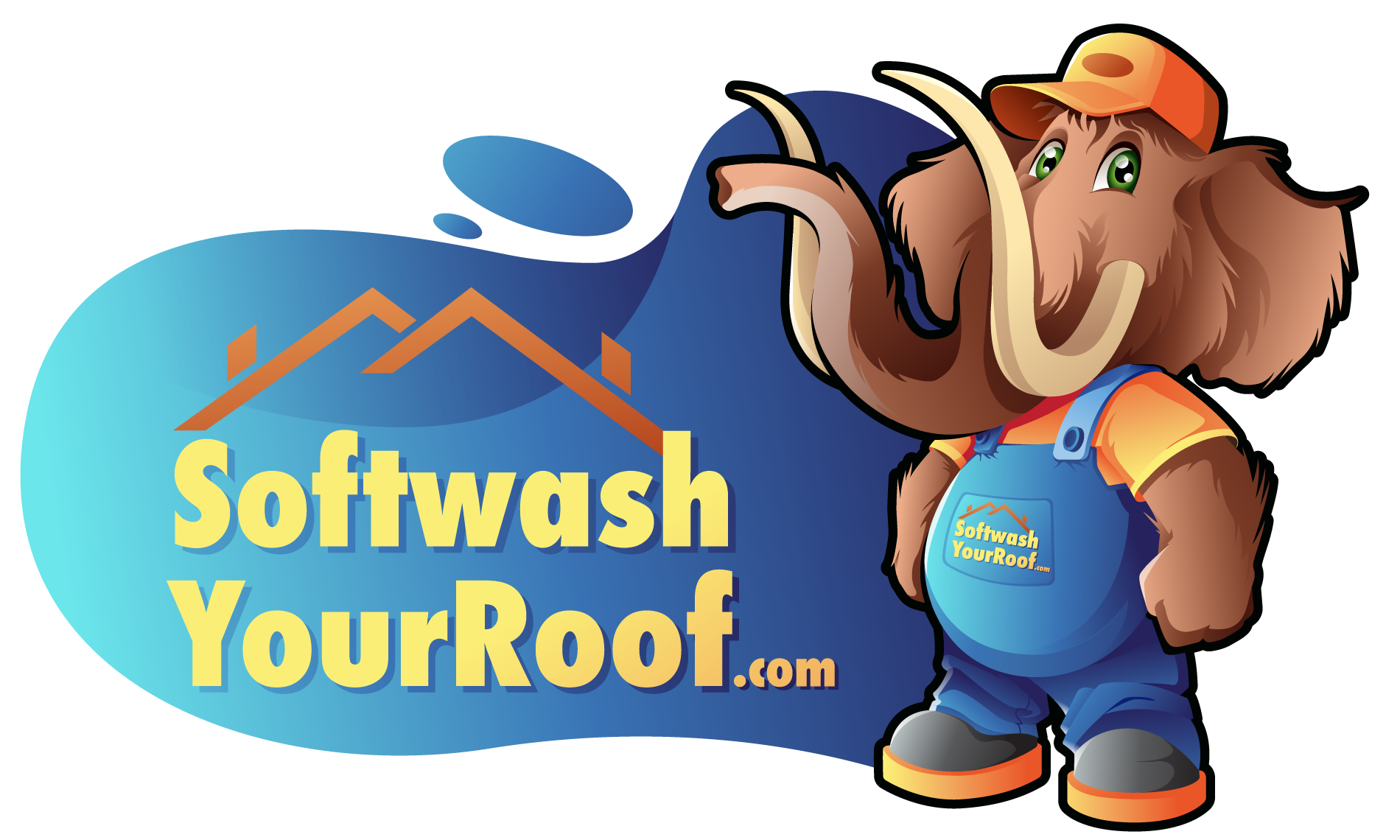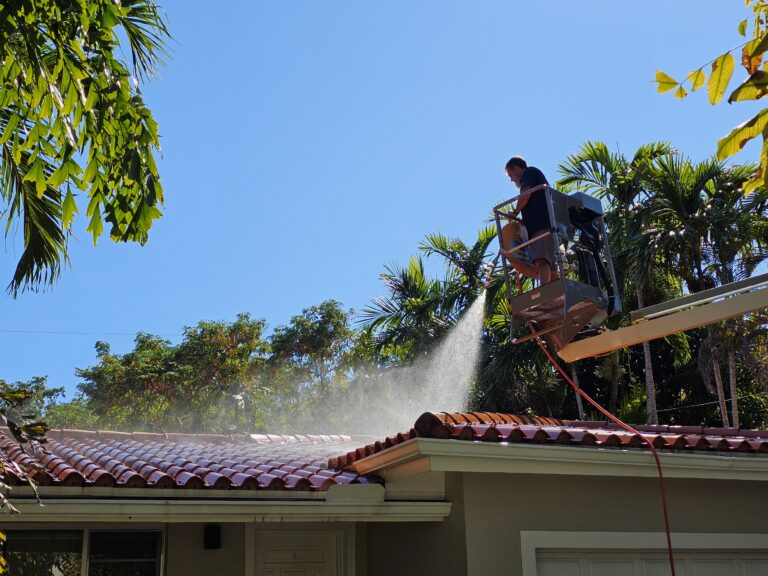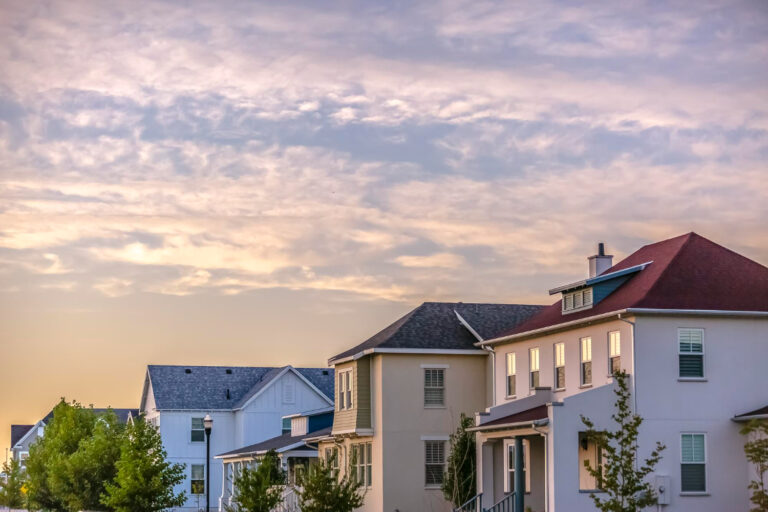
Master Pressure Wash Driveway: 5 Steps to Boost Curb Appeal
A clean, well-maintained driveway can improve your home's curb appeal. We've all seen those new driveways, and it's no secret that pressure washing is the key to achieving that fresh, inviting look. As homeowners, we're always looking for ways to boost our property's appearance, and learning how to pressure wash a driveway is a skill that pays off in spades. 5 Easy How To Steps To Pressure Wash Your Driveway For Maximum Curb Appeal
This guide will walk you through giving your driveway a professional-grade clean. From gathering the right equipment to applying a protective sealant, we've got you covered. Following our step-by-step instructions, you can transform your concrete surfaces into spotless showcases, including walkways and patios. The sense of accomplishment you'll feel after giving your home's exterior a major facelift is unparalleled. Get ready to roll up your sleeves and take pride in your home's new look!
Gather Necessary Equipment and Supplies
Before pressure washing our driveway, we need to gather all the essential equipment and supplies. This preparation step is crucial to ensure we have everything we need for a successful and efficient cleaning process. Let's review the necessary items to get the job done right.
Pressure washer
Of course, the star of the show is the pressure washer itself. To clean concrete and asphalt effectively, we recommend using a machine with at least 1500 PSI (pounds per square inch). Most medium-duty models and up will be suitable for this project. Remember, the higher the PSI, the faster and stronger our cleaning will be. Whether we choose an electric or gas-powered pressure washer, both types can adequately remove stains and dirt from our driveway.
When selecting a pressure washer, we should consider one that can handle at least 4 gallons per minute (GPM). This flow rate allows us to tackle various cleaning tasks quickly and efficiently. We might opt for a model with even higher PSI and GPM ratings if we're dealing with particularly stubborn stains or a large area.
Cleaning solutions
To boost our cleaning power, we'll need some specialized cleaning solutions. A good driveway cleaner is essential to loosen dirt, mold, and grime before we start pressure washing. We should apply this cleaner all over our pavement and allow it to work its magic for a few minutes before washing it off.
For deep stains, we suggest using a degreaser. We can apply it to the affected areas and let it soak in for about 5 minutes. Then, we'll scrub it with a brush before washing it away with the pressure washer.
When choosing cleaning solutions, it is essential to select products compatible with our pressure washer and safe for use on concrete or asphalt. Many home improvement stores offer a range of options specifically designed for pressure washing driveways and other exterior surfaces.
Safety gear
Safety should always be our top priority when pressure washing. We must wear appropriate protective clothing to avoid any potential injuries or accidents. Here's what we should have on hand:
- Splash-resistant goggles or a face shield to protect our eyes from water spray and debris
- Closed-toe shoes with good traction to prevent slips on wet surfaces
- Heavy-duty cleaning gloves to protect our hands from chemicals and high-pressure water
- Ear protection, especially if we're using a gas-powered pressure washer, to safeguard our hearing
It's also a good idea to wear long pants and a long-sleeved shirt to protect our skin from any potential splashback of cleaning solutions or debris.
Gathering all these necessary items before we begin is a proactive step toward maintaining our property. With the right equipment and supplies, we can move on to the next step: preparing the driveway surface for a thorough pressure wash. Remember, regular maintenance is key to preserving your driveway's appearance and ensuring it continues to showcase your home.
Prepare the Driveway Surface
Now that we've gathered our equipment, it's time to prepare our driveway for a thorough pressure wash. Proper preparation is key to achieving the best results and ensuring a safe cleaning process. Let's go through the essential steps to prepare our driveway surface.
Clear debris
We need to remove any loose debris before we start pressure washing our driveway. This step is crucial as it prevents stones, leaves, and other items from becoming potential hazards when hit by high-pressure water. We'll use a stiff-bristled brush to sweep away dust, leaves, and other objects from the surface. Any broom will do the job if we don't have a stiff brush. It's also a good idea to remove obstacles like wheelie bins and plant pots to ensure full access to the driveway.
Cover nearby plants
Protecting our landscaping is an important part of the preparation process. If we're not careful, pressure washing can potentially harm nearby shrubs, plants, grass, and other foliage. To safeguard our greenery, we'll take a few precautions:
- We'll start by thoroughly wetting all the areas around the driveway with a garden hose. This helps reduce the chance of our grass absorbing any cleaning solutions we use.
- We'll cover small shrubs and ground plants close to the driveway with tarps. This will shield them from direct water and chemical hits during the pressure washing process.
- We'll be mindful not to leave the tarps on too long, which can cause a greenhouse effect and overheat the plants.
By taking these steps, we're ensuring that our pressure washing project doesn't come at our landscaping cost.
Pre-treat stains
We'll pre-treat the driveway surface to make our pressure washing more effective, especially on stubborn stains. This step can significantly improve the final results of our cleaning efforts.
- We'll start by applying a degreaser to the entire driveway. This will help loosen up any oil or grease stains accumulated over time. We'll spray the degreaser, keeping it about 6 inches from the surface, and then scrub it into the concrete using a stiff brush or a pressure-washer attachment tool.
- We might need a specially formulated oil remover for adamant oil stains. We'll apply this to the affected areas and let it sit for a few minutes to work magic.
- After applying the degreaser or oil remover, we'll let it dwell on the surface for 5-10 minutes. This gives the solution time to break down the stains and make them easier to remove during pressure-washing.
- If we accidentally get any cleaning solution on our grass, we'll immediately rinse that area with our garden hose to minimize potential damage.
Following these preparation steps, we're setting ourselves up for a successful pressure-washing session. Our driveway will be clear of debris, our plants will be protected, and those stubborn stains will be pre-treated and ready for removal. We're all set to move on to the main event – pressure washing our driveway to boost our home's curb appeal!
Could you execute the pressure-washing process?
Now that we've prepared our driveway, it's time to start the pressure-washing process. This is where we'll see the magic happen as we transform our dirty driveway into a clean, inviting surface that boosts our home's curb appeal.
Proper technique
We need to use the right technique to effectively pressure wash our driveway. We'll start by selecting the appropriate nozzle for our pressure washer. For concrete driveways, a 15-degree or 25-degree nozzle usually works best. These nozzles provide a good balance between cleaning power and coverage.
We'll hold the wand consistently from the surface, typically between 6 to 12 inches. This helps maintain even pressure across the driveway. We'll use sweeping, overlapping strokes to ensure we don't miss any spots. Moving slowly enough is essential for the pressure washer to do its job effectively.
For stubborn stains, we might need to adjust our technique slightly. We can move the nozzle closer to the surface, about 3 to 4 inches away, and use slower, more focused strokes. This increases the cleaning power on those tough spots.
Working in sections
To ensure thorough cleaning of our entire driveway, we'll work in manageable sections. We'll start at the highest point of the driveway and work our way down. This approach prevents dirty water from flowing over areas we've already cleaned.
We'll divide our driveway into sections about 4 to 6 feet wide. We'll clean each section thoroughly before moving on to the next. This method helps us maintain focus and ensures we don't miss any areas.
We'll pay special attention to corners, edges, and areas near the garage door as we work. These spots often accumulate more dirt and might need extra attention.
Rinse thoroughly
After we've cleaned each section, it's crucial to rinse the area thoroughly. For rinsing, we'll switch to a broader spray pattern, like a 40-degree nozzle. This helps remove any loosened dirt and detergent residue without damaging the surface.
We'll start rinsing from the top of the cleaned section and work our way down, just like we did during the cleaning process. This ensures that all the dirty water and debris are washed away from the cleaned areas.
It's important to be thorough with our rinsing. Any leftover detergent or dirt can leave streaks or residue on our driveway once it dries. We'll rinse until the water running off the driveway is clear.
We can effectively pressure wash our driveway by following these steps, using proper technique, working in sections, and rinsing thoroughly. This process will remove years of dirt and grime, revealing a clean surface that significantly improves our home's exterior appearance.
Apply Sealant for Long-Lasting Results
After pressure-washing our driveway, we can take an extra step to protect our investment and boost our home's curb appeal even further. Applying a sealant is a great way to maintain a safe and attractive driveway, offering protection from water damage and enhancing its overall appearance.
Choose appropriate sealant
Selecting the right sealer is crucial to getting the best results. Different types of sealers are available, each with its own benefits and characteristics. Acrylic sealers are a popular choice for concrete driveways due to their good UV protection. They're also relatively easy to apply and maintain.
When choosing a sealer, we need to consider factors like our local climate, the material of our driveway, drying time, and environmental concerns. Selecting a sealant that can withstand our area's conditions is essential. We should also factor how long we can keep vehicles off the driveway, as some sealers require more drying time than others.
Environmental-conscious consumers should look for sealers with a lower VOC (Volatile Organic Compounds) content. These are better for the environment and often have less odor during application.
Application tips
Once we've chosen our sealer, it's time to apply it. Here are some tips to help us get the best results:
- Timing is key: We should apply the sealer as soon as possible after pressure washing and allowing the driveway to dry completely. This prevents dirt from accumulating on the clean surface, which could interfere with the sealer's penetration.
- Gather necessary tools: We'll need the sealer, a mixing paddle and drill (for thick sealers), a squeegee or brush applicator, and protective gear like gloves and safety glasses.
- Protect surrounding areas: Use tape or plastic sheeting to protect adjacent surfaces from accidental overspray.
- Apply in sections: Start at the highest point of the driveway and work your way down. Pour a small amount of sealer onto the driveway and spread it evenly with our applicator—work in small sections, overlapping slightly for full coverage.
- Consider multiple coats: Depending on the product instructions, we might need to apply a second coat for optimal protection.
- Allow proper drying time: Follow the manufacturer's instructions for drying time, which typically ranges from 24 to 48 hours. We should block off the driveway to prevent use until it fully dries.
By taking the time to apply a sealant after pressure washing our driveway, we're not only enhancing its appearance but also protecting it from future stains and potential damage. This extra step can significantly extend the life of our driveway, saving us time and money in the long run. Remember, we'll need to reseal our driveway every 1-2 years to maintain its protective qualities and keep it looking its best.
Conclusion
Mastering the art of pressure washing your driveway significantly impacts your home's curb appeal. Following these steps, you can transform your concrete surfaces into spotless showcases, from gathering the right equipment to applying a protective sealant. This not only enhances the look of your property but also helps to maintain its value over time.
Remember, regular maintenance is key to keeping your driveway looking its best. To wrap up, could you think about tackling this project annually or as needed to preserve the fresh, clean appearance of your home's exterior? For those who prefer to leave it to the pros, contact Softwash Your Roof for a free quote at (786)876-3505 or [email protected]. With a little effort and attention, your driveway can become a standout feature that boosts your home's overall appeal.
FAQs
What type of nozzle is recommended for pressure washing a driveway?
For effective cleaning, a 15° spray pattern is ideal, as it is powerful enough to clean dirty concrete and brick surfaces. However, it is important to use this nozzle carefully, as it can damage softer materials like wood or vinyl siding.
What is the optimal PSI for effective pressure washing in a driveway?
A pressure washer with at least 3100 PSI is recommended to clean a driveway efficiently. While pressure washers with PSIs ranging from 1000 to 2300 can also clean driveways, they tend to be slower and less efficient, especially for larger or dirtier surfaces.
Which pressure washer nozzle should be used for different driveway cleaning tasks?
The green nozzle, which provides a 25-degree spray, is versatile for various cleaning tasks. It effectively removes tough stains from concrete and brick when held close to the surface and can safely clean wood and siding if the nozzle is kept at a greater distance. This nozzle is also suitable for cleaning gutters, aluminum trim, sidewalks, and patios.
Is it advisable to use soap when pressure washing a driveway?
Yes, soap is recommended when pressure washing a driveway. Similar to how detergent is used for laundry to pre-treat and clean clothes, soap helps loosen dirt, mold, and grime on driveways, making them easier to clean with a pressure washer.








